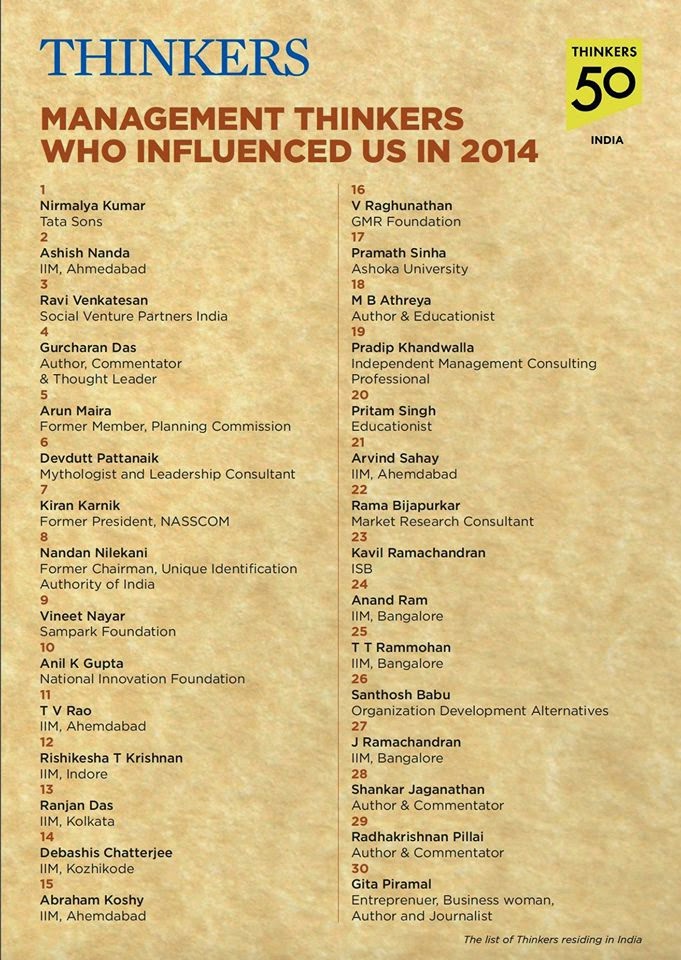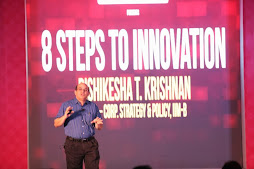The idea of “disruptive” innovation was first advanced by Harvard Business School Professor Clayton Christensen in his book The Innovator’s Dilemma. It’s a powerful idea, but sometimes a confusing one. In many of my recent executive education classes, we have had long debates about what constitutes a disruptive innovation, and what doesn’t. And there have been persistent questions about how disruptive innovation is different from radical innovation.
I went back to read some of Clay Christensen’s articles in an effort to clarify these issues.
What is a Disruptive Innovation?
The first characteristic of a disruptive innovation is that it initially provides inferior performance (as measured by the prevailing industry metrics) to existing products available. As a result, it is usually not of much interest to existing users or customers.
The second characteristic of a disruptive innovation is that it is adopted by a market that is currently underserved or not served at all. In other words, it serves a market segment that did not exist before.
In his earlier work, Christensen often emphasized a third characteristic: a disruptive innovation has a steep improvement trajectory so that at a later stage it can meet the needs of the initial market as well. But, it appears that this criterion is not stressed so much now.
Since disruptive innovations are usually not of interest to a company’s existing customers, market leaders are rarely the source of disruptive innovations.
Examples of Disruptive Innovation
Disruptive innovations can be found across industries, and in the social sector. Here are some examples pulled together from Christensen’s work and elsewhere:
The Personal computer: When first introduced, the PC did not provide the computational power or speed of existing mainframe or minicomputers. The PC created completely new segments of computer users such as home users, small office home office (SOHO) users, and students. Later, the Wintel PC configuration became so powerful that it displaced workstations from the market.
Low-cost airlines: When they started, low-cost airlines like Southwest did not provide many of the features that business customers expected like fixed seating, first class, meals on-board, or interline connections to other flights. Southwest, in particular, created a new market of short-haul air travelers by offering a service that competed with travelling by road.
Table-top copiers: First introduced by Japanese companies Ricoh and Canon, table-top photocopiers were much slower and offered less flexibility than the large copiers being sold by Xerox. But, these sleek copiers met the limited needs of individual managers or departments in corporations to get a few quick copies made to meet immediate needs.
Microfinance: This social innovation does not have all the sophistication of a traditional banking product but meets the financial needs of people who were traditionally outside the purview of the banking system.
Online education: While online classes sacrifice some of the rich discussions possible in a face-to-face classroom setting, they offer an opportunity for people who can’t spare the time to attend classes to educate themselves. With cheaper bandwidth and improvements in technology, they have the potential to displace classroom teaching in several contexts.
How is Disruptive Innovation different from Radical Innovation?
As we have seen, the classification of an innovation as disruptive (as contrasted to “sustaining”) is based on performance and market-related parameters. Radical innovation is instead compared to incremental innovation, and is based on the magnitude of improvement in performance and a change in technology.
Radical innovation almost always seems to mean an order of magnitude improvement in performance or a significant shift from existing performance or solving a complex problem that existing products don’t solve. This means more sophisticated technology, based on pushing the boundaries of knowledge.
The first biopharmaceutical drugs were radical innovations because they used a completely different technology (biological methods of production rather than chemical synthesis) and addressed medical problems that could not be solved satisfactorily by existing drugs. New cancer therapies like the gamma knife are again radical innovations because they allow targeted radiotherapy, minimizing radiation damage to healthy cells.
Disruptive innovations don’t need to be based on radical technological innovations of this nature. Microfinance, for example, did not involve radically new technology. But some disruptive innovations can be radical as well – Massively Open Online Courses (MOOCs) do use some radical new technologies.
Radical innovations would rarely be classified as disruptive because, as we have seen, they are often aimed at driving the performance frontier rather than serving under-served or unserved markets.
I went back to read some of Clay Christensen’s articles in an effort to clarify these issues.
What is a Disruptive Innovation?
The first characteristic of a disruptive innovation is that it initially provides inferior performance (as measured by the prevailing industry metrics) to existing products available. As a result, it is usually not of much interest to existing users or customers.
The second characteristic of a disruptive innovation is that it is adopted by a market that is currently underserved or not served at all. In other words, it serves a market segment that did not exist before.
In his earlier work, Christensen often emphasized a third characteristic: a disruptive innovation has a steep improvement trajectory so that at a later stage it can meet the needs of the initial market as well. But, it appears that this criterion is not stressed so much now.
Since disruptive innovations are usually not of interest to a company’s existing customers, market leaders are rarely the source of disruptive innovations.
Examples of Disruptive Innovation
Disruptive innovations can be found across industries, and in the social sector. Here are some examples pulled together from Christensen’s work and elsewhere:
The Personal computer: When first introduced, the PC did not provide the computational power or speed of existing mainframe or minicomputers. The PC created completely new segments of computer users such as home users, small office home office (SOHO) users, and students. Later, the Wintel PC configuration became so powerful that it displaced workstations from the market.
Low-cost airlines: When they started, low-cost airlines like Southwest did not provide many of the features that business customers expected like fixed seating, first class, meals on-board, or interline connections to other flights. Southwest, in particular, created a new market of short-haul air travelers by offering a service that competed with travelling by road.
Table-top copiers: First introduced by Japanese companies Ricoh and Canon, table-top photocopiers were much slower and offered less flexibility than the large copiers being sold by Xerox. But, these sleek copiers met the limited needs of individual managers or departments in corporations to get a few quick copies made to meet immediate needs.
Microfinance: This social innovation does not have all the sophistication of a traditional banking product but meets the financial needs of people who were traditionally outside the purview of the banking system.
Online education: While online classes sacrifice some of the rich discussions possible in a face-to-face classroom setting, they offer an opportunity for people who can’t spare the time to attend classes to educate themselves. With cheaper bandwidth and improvements in technology, they have the potential to displace classroom teaching in several contexts.
How is Disruptive Innovation different from Radical Innovation?
As we have seen, the classification of an innovation as disruptive (as contrasted to “sustaining”) is based on performance and market-related parameters. Radical innovation is instead compared to incremental innovation, and is based on the magnitude of improvement in performance and a change in technology.
Radical innovation almost always seems to mean an order of magnitude improvement in performance or a significant shift from existing performance or solving a complex problem that existing products don’t solve. This means more sophisticated technology, based on pushing the boundaries of knowledge.
The first biopharmaceutical drugs were radical innovations because they used a completely different technology (biological methods of production rather than chemical synthesis) and addressed medical problems that could not be solved satisfactorily by existing drugs. New cancer therapies like the gamma knife are again radical innovations because they allow targeted radiotherapy, minimizing radiation damage to healthy cells.
Disruptive innovations don’t need to be based on radical technological innovations of this nature. Microfinance, for example, did not involve radically new technology. But some disruptive innovations can be radical as well – Massively Open Online Courses (MOOCs) do use some radical new technologies.
Radical innovations would rarely be classified as disruptive because, as we have seen, they are often aimed at driving the performance frontier rather than serving under-served or unserved markets.

















Its interesting to know which will be a successful innovation and which will not. How do you define a success in innovation?
ReplyDeleteSometimes I believe,the term "Innovation" is related only to success. If it is not successful, it is only "a failed IDEA". Only when it is successful it is termed Innovation.
DeleteIt is a well debated topic among the innovation scholars. To understand the "Successful" Innovation, we need to go into the definition of innovations. In the Schumpeterian tradition success is measured in terms of economic or commercial success. However, there are scholars who consider various factors to measure success of innovation other than commercial success. Such as if innovator himself, or expert in the field or future prospects (which somehow not materialised)are the parameters to consider innovation as successful. These approaches not only measure the success but also broaden the definition of innovation.
DeleteWhile acknowledging the differentiation between the two types of Innovation, there still exists a question in the mind as to whether the line is becoming thinner and thinner between the two. Is there a possibility of a change from what started as disruptive becoming a radical innovation over a period of time? The example of Microfinance for instance, initially started as either a savings mechanism or a liability mechanism depending upon the models of the groups either as JLG or SHG. Once the basic discipline was established, the next step was to progress towards scaling up the impact and this required a much stronger technology and compliance focus. The models in themselves are now enabling progress further towards a much larger participation by the BOP population in areas which were hitherto not happening. On a personal basis I have been part of an initiative which moved the relationship from a pure lending one to an all-encompassing one where in we had enabled Healthcare (through health camps), Education (through training programs), Awareness (regular campaigns through simple usage of newsletters and as part of the loan pass-book) and Livelihood (Funding specifically for Cattle and enabling the proper usage of marketing systems. We had also initiated contacts with large organizations like HUL to promote "Pureit" water filters through the usage of Microfinance intervention. Does this sort of impact mean "What actually started as a disruptive innovation can actually become radical through continuous participation of various players and technology"? There have been some initiatives like rangde.org which have progressed further by using the internet to source donors for their Microfinance initiative. And finally, will Microfinance actually classify as a radical innovation since it was started since the existing mechanism of Bank finance was not addressing the financial inclusion requirements in the manner they ought to have. That's where I feel the line is thinning considerably.
ReplyDeleteThanks for sharing this with us. I was in the EGMP class where this was discussed.
ReplyDeleteI felt that the definition of disruptive innovation is purely based on market impact. The wikipedia defines it as: "A disruptive innovation is an innovation that helps create a new market and value network, and eventually goes on to disrupt an existing market and value network (over a few years or decades), displacing an earlier technology."
This typically has the 3 characteristics identified by Christiansen ( I had read the book a while back). In my view the 3 characteristics is not sufficient to characterize an innovation as disruptive. It has to disrupt an existing market.
Thanks for this post Rishi. I found it very useful in understanding the difference between the two concepts. In particular, I liked how the two concepts differ in what they do to the performance.
ReplyDelete